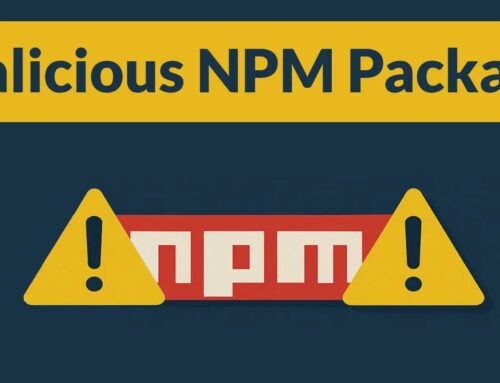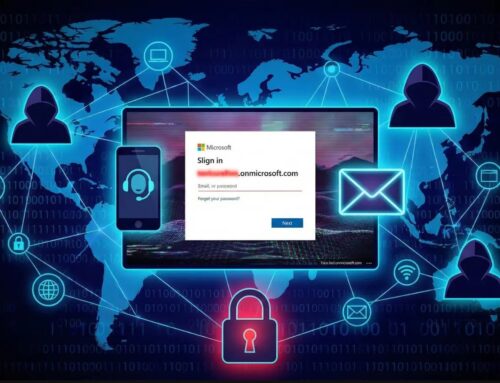
Scattered Spider Hijacks VMware ESXi to Deploy Ransomware on Critical U.S. Infrastructure
The digital landscape is under constant siege, and threat actors are perpetually refining their tactics. A recent and alarming development highlights this reality: the notorious Scattered Spider cybercrime group has been observed compromising VMware ESXi hypervisors to deploy ransomware.
This coordinated assault targets critical North American infrastructure across the retail, airline, and transportation sectors, underscoring the severe and tangible impact of modern cyberattacks. Unlike sophisticated zero-day exploits, Scattered Spider’s success hinges on a disturbingly effective and low-tech approach: manipulating human vulnerabilities rather than software flaws. This post will delve into their methodology, the implications for affected organizations, and crucial remediation strategies.
Scattered Spider’s Modus Operandi: The Social Engineering Edge
Google’s Mandiant team has shed light on Scattered Spider’s consistent and disturbingly effective methodology. Their core tactic doesn’t rely on complex software exploits or newly discovered vulnerabilities. Instead, they exploit the weakest link in any organization’s security posture: its people.
Mandiant states, “The group’s core tactics have remained consistent and do not rely on software exploits. Instead, they use a proven playbook centered on phone calls to an IT help desk.” This social engineering technique allows them to bypass traditional security controls. By impersonating legitimate employees or service providers, they trick IT support into resetting credentials, granting elevated privileges, or providing remote access, ultimately leading to control over critical systems like VMware ESXi hypervisors.
The VMware ESXi Target: A High-Value Asset
VMware ESXi is a bare-metal hypervisor, a fundamental component of virtualized IT infrastructure. Its compromise offers attackers a direct path to the numerous virtual machines (VMs) running on it. For Scattered Spider, gaining control of an ESXi host means they can:
- Deploy ransomware broadly: Once an ESXi host is compromised, attackers can encrypt or disable all virtual machines running on that host simultaneously, causing widespread operational disruption.
- Impact critical services: Given the retail, airline, and transportation sectors use ESXi extensively for their operational technology (OT) and core business applications, a successful attack can cripple supply chains, ground flights, and halt commerce.
- Maintain persistence: Control over the hypervisor can allow them to manipulate or disable security tools running within VMs, making detection and eradication significantly more challenging.
Impacts on North American Infrastructure
The selection of retail, airline, and transportation sectors by Scattered Spider is strategic. These industries are characterized by:
- High criticality: Disruptions can have immediate and far-reaching economic and societal consequences.
- Interconnectedness: A single point of failure can cascade through an entire system, impacting multiple businesses and services.
- Time-sensitive operations: Ransomware attacks can severely impact just-in-time logistics or passenger management systems, where even minutes of downtime are costly.
The group’s ability to pivot from initial social engineering to large-scale ransomware deployment on critical virtualization infrastructure demonstrates a sophisticated understanding of IT environments and a ruthless pursuit of their financial objectives.
Remediation Actions and Proactive Defenses
Defending against social engineering-centric groups like Scattered Spider requires a multi-layered approach that prioritizes human awareness alongside technical controls. Since this attack vector doesn’t rely on a specific software vulnerability with a CVE, the focus shifts to robust preventative measures and rapid response capability.
Immediate Actions:
- Review and strengthen help desk protocols: Implement strict identity verification processes for all help desk interactions, especially for password resets or privilege escalation requests. This should include multi-factor authentication (MFA) challenges even after initial identity confirmation.
- Audit VMware ESXi configurations: Ensure all ESXi hosts are configured according to VMware’s security best practices. This includes limiting administrative access, using strong, unique passwords for root and service accounts, and regularly patching.
- Isolate and segment critical infrastructure: Implement network segmentation to isolate ESXi hosts and critical VMs from broader corporate networks. This limits lateral movement even if an initial compromise occurs.
Proactive Preventative Measures:
- Intensive Security Awareness Training: Regularly train all employees, especially help desk staff, on common social engineering tactics, phishing, and the importance of verifying requests through alternative, trusted channels before acting. Emphasize that no legitimate IT professional will ask for passwords or sensitive information over the phone without strict verification.
- Implement Robust Multi-Factor Authentication (MFA): Enforce MFA for all critical systems, including remote access, VPNs, administrative dashboards, and especially for VMware vCenter and ESXi host logins. Push-based or hardware token MFA is generally more resistant to phishing than SMS-based MFA.
- Regular Backup and Disaster Recovery Planning: Maintain immutable, offsite backups of all critical data and VM images. Test disaster recovery plans regularly to ensure rapid restoration capabilities in the event of a successful ransomware attack.
- Principle of Least Privilege: Grant users and service accounts only the minimum necessary permissions to perform their duties. Regularly review and revoke unnecessary privileges.
- Enhanced Logging and Monitoring: Implement comprehensive logging on ESXi hosts, vCenter Server, and Active Directory. Monitor these logs for unusual activity, such as failed login attempts, privilege escalation, suspicious administrative commands, or changes to VM configurations. Integrate these logs with a Security Information and Event Management (SIEM) system.
- Endpoint Detection and Response (EDR) on VMs: Deploy EDR solutions on all virtual machines to detect and respond to malicious activity post-compromise. While ESXi itself doesn’t typically run an EDR, the VMs it hosts are traditional endpoints.
- Zero Trust Architecture: Adopt a Zero Trust security model, where no user or device is trusted by default, regardless of whether they are inside or outside the network. All access requests must be authenticated, authorized, and continuously validated.
Relevant Tools for Defense:
| Tool Name | Purpose | Link |
|---|---|---|
| VMware vCenter Server | Centralized management of ESXi hosts; critical for security configuration and monitoring. | https://www.vmware.com/products/vcenter-server.html |
| Security Information and Event Management (SIEM) System | Aggregates and analyzes log data from ESXi, vCenter, AD, and other systems for threat detection. | (e.g., Splunk, Microsoft Sentinel, Elastic SIEM – specific link depends on vendor) |
| Multi-Factor Authentication (MFA) Solutions | Adds a mandatory second verification factor for authentication (e.g., Duo Security, Okta, Microsoft Authenticator). | (e.g., https://duo.com/) |
| Vulnerability Management Solutions (for guest OS within VMs) | Identifies and manages vulnerabilities within the operating systems and applications running on virtual machines. | (e.g., Tenable, Qualys, Rapid7 – specific link depends on vendor) |
| Network Segmentation Tools (e.g., NSX from VMware) | Enables micro-segmentation and granular network policy enforcement within virtualized environments. | https://www.vmware.com/products/nsx.html |
Conclusion
The attacks by Scattered Spider against VMware ESXi infrastructure serve as a stark reminder that the human element remains a critical, and often exploited, vulnerability in cybersecurity. Their reliance on social engineering to infiltrate high-value targets in vital industries demonstrates adaptiveness and persistence.
Organizations must move beyond solely patching software flaws; they must invest heavily in robust security awareness training, implement uncompromising identity verification protocols, and fortify their infrastructure with multi-factor authentication, network segmentation, and stringent privileged access management. Proactive defense, continuous monitoring, and a prepared incident response plan are no longer optional but essential for resilience against these evolving threats.





